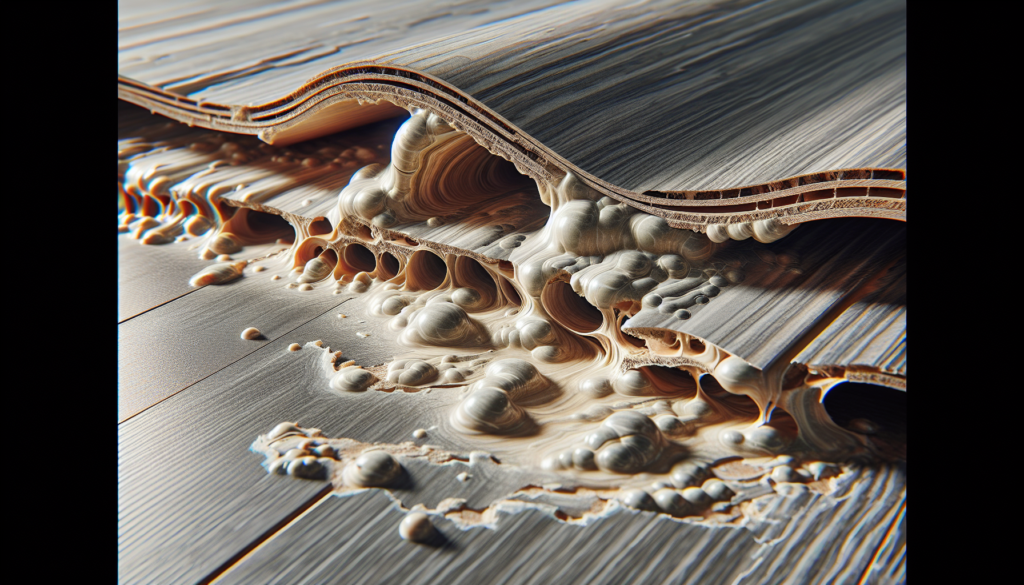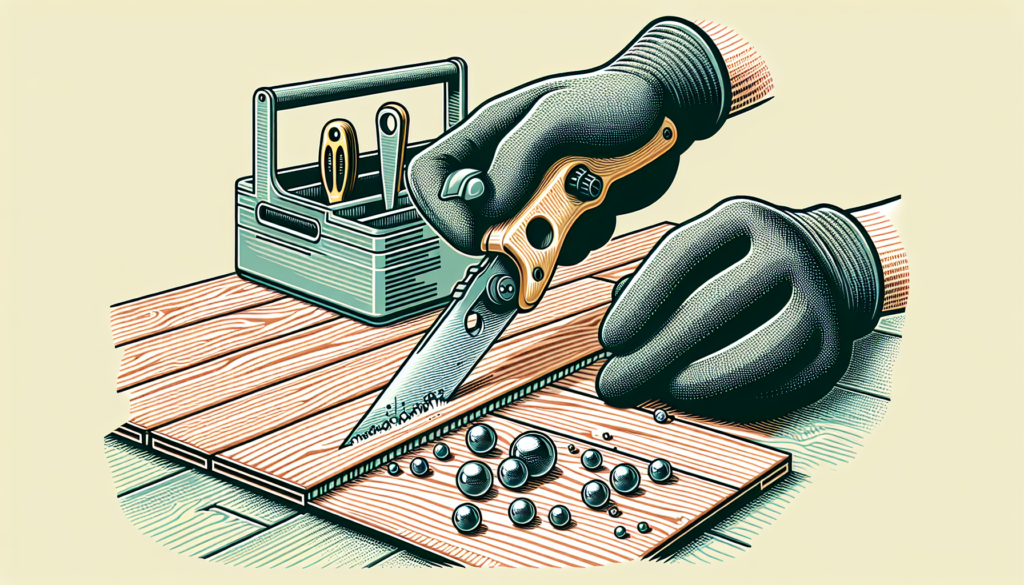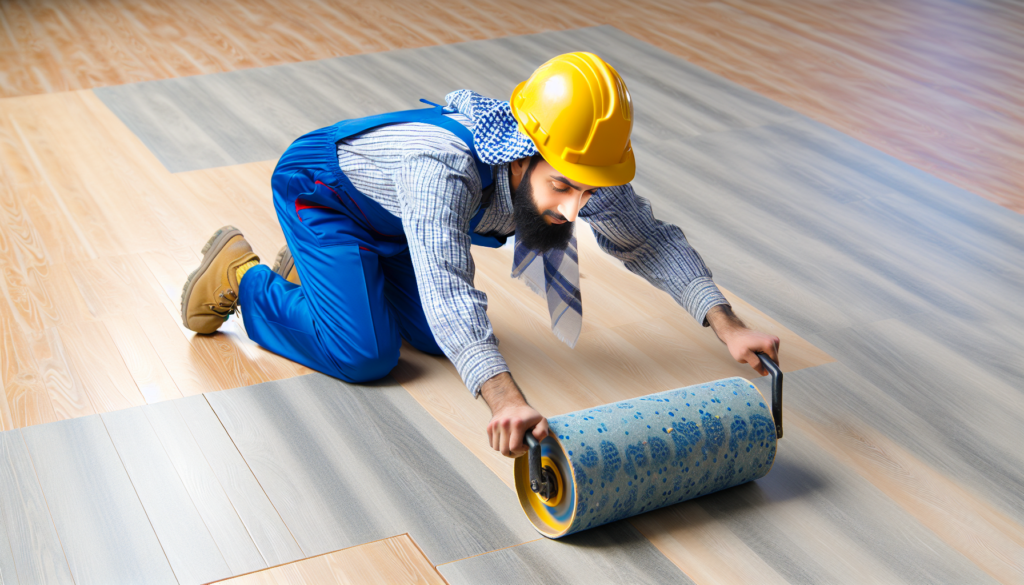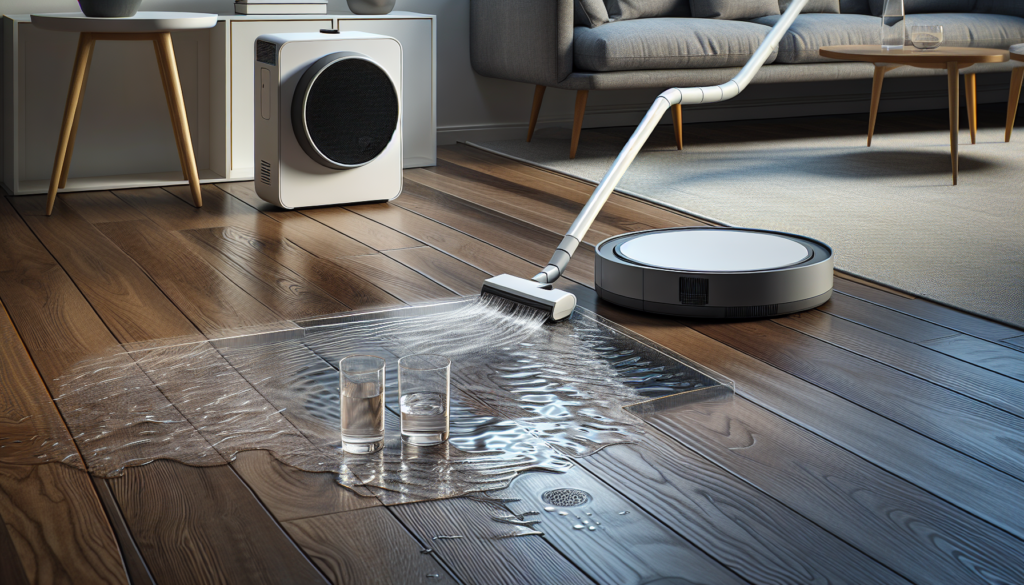Laminate floor bubbling can be a hassle, but fixing it doesn’t have to be.
Whether it’s moisture mishaps or installation errors, this guide dives straight into how to fix laminate floor bubbling.
With simple, direct advice, you’ll learn both the reasons behind the bubbling and the exact steps to smooth out your flooring, ensuring your laminate looks its best.
Key Takeaways
- Laminate floor bubbling can be caused by excess moisture, improper installation, or trapped air, which may necessitate repair or replacement of affected planks.
- Fixing laminate floor bubbling involves drying the area, repairing or flattening minor bubbles, and replacing severely damaged planks while addressing the underlying cause.
- Preventing future laminate floor bubbling is crucial and involves proper installation, regular maintenance, moisture management, and seeking professional help for severe or complex issues.
Understanding Laminate Floor Bubbling

Bubbling of laminate floor can occur when the planks become raised and form bubbles due to various underlying issues such as excessive moisture, incorrect installation, or trapped air.
Neglecting these factors could result in a repair project which may involve removing and replacing the entire flooring with new laminated planks.
To prevent this problem from happening, it is important to address its root causes.
These include keeping an eye on excess moisture levels during installation and avoiding any potential traps for air that might arise later on.
By taking proper precautions beforehand, you can avoid having to replace your laminate flooring due to bubbling issues.
Bubbling is majorly caused by inadequate attention to moisture control or unevenly laid out planks for your laminate flooring.
Excess Moisture
Excessive moisture can result in the swelling of laminate flooring.
This occurs when the high-density fiberboard (HDF) core becomes swollen, causing the joints to rise above the subfloor.
Factors that contribute to this issue include direct water damage such as spills left uncleaned and elevated humidity levels.
It is essential to promptly attend to any spills and regulate indoor humidity levels.
To address issues with excess moisture, follow these two steps:
- Identify and fix sources of moisture, such as leaky pipes or windows.
- Remove affected planks.
Improper Installation
Improper installation is a common cause of bubbling in laminate floors.
This issue can be avoided by addressing these potential mistakes during the installation process: not allowing for acclimation to the environment, neglecting moisture barriers, and failing to leave enough expansion space.
Changes in temperature can cause laminates to expand or contract, leading to air pockets and buckling if there isn’t sufficient room along the edges.
To prevent this problem, it’s important to use T-molds as necessary in larger projects.
Baseboards or moldings placed on top of laminate floor edges may also hinder proper expansion and result in bubbling.
Creating a smooth subfloor through sanding or patching compounds can help avoid issues with your flooring.
In summary, improper installment techniques such as insufficient acclimation time and inadequate allowance for movement are major contributors when it comes down bubbled laminate floors emerge into surface areas giving out excess air that form underneath its initial manufactured placement.
Tasks like considering T-shaped joints will aid prevention against any resulting inflation bubbles ultimately compromising good structural capacity.
Installing baseboard trims might encroach upon edge spacing & create undesired pressure disallowment disrupting bubble-free placements later.
Trapped Air
Proper ventilation is crucial during the installation of laminate flooring to prevent bubbling.
If air becomes trapped under unsealed laminate, it can lead to floor bubbles due to moisture and humidity seeping in.
This issue can worsen in high-humidity areas where liquid entering gaps can cause small bubbles.
To avoid this problem, ensure adequate home ventilation during installation by following these tips:
- Use fans or air conditioning and open windows to regulate humidity levels.
- Maintain consistent room temperatures after installation.
- Keep a fan running to circulate air and prevent fluctuations that may damage your laminate flooring.
How to Fix Laminate Floor Bubbling Issue
Experiencing bubbling on your laminate floor? No need to worry! The fix involves a few simple steps.
- Dry the area that is affected
- Fix any minor bubbles present
- Use a roller to flatten out larger bubbles
- If necessary, replace damaged planks with new ones.
Drying the Affected Area
To fix bubbling on a laminate floor, the first step is to dry the affected area.
Start by wiping up any visible water using a towel or cloth and then remove deeper water with either a wet vac or pump.
It’s important to ensure that the area is completely dry before beginning any repairs.
To speed up the drying process of moisture underneath laminate flooring, try promoting better air circulation with large fans or ceiling fans.
You can also use tools such as hairdryers and space heaters with built-in fans to create airflow and heat.
This will help accelerate evaporation in the specific location causing bubbles on your laminate floor.
Repairing Minor Bubbles

When dealing with minor bubbles on laminate, it is possible to fix them without having to replace the entire plank.
Start by making sure the area is dry and then gently dampen it.
Take a sharp knife and carefully make an incision at the center of the bubble.
Apply wood glue into this cut and spread evenly under the laminate surface.
Place a heavy object over this section and let it dry for at least 12 hours in order for proper adhesion to occur between wood surfaces.
Flattening Bubbles with a Roller

A 100lb roller can come in handy when dealing with larger and swollen areas on laminate flooring.
Simply roll the affected area repeatedly until the bubble is flattened out.
In cases of minor bubbles, smaller rollers can also be used to apply even pressure for a smooth finish.
Remember to address the underlying cause of bubbling after flattening the laminate.
This may involve fixing any leaks that are causing excess moisture or correcting installation errors.
Replacing Damaged Laminate Planks

In certain situations, it may be necessary to replace a damaged plank rather than attempt to repair it. This process involves removing wall molding and using a circular saw set at the thickness of the plank to carefully cut out the damaged piece without affecting surrounding planks.
After successfully removing the damaged plank, follow these steps for installing its replacement:
- Apply carpenter’s glue onto both tongues and grooves of the new plank.
- Fit snugly into place amongst neighboring planks.
- Use weight or pressure on top until glue has fully dried.
- Once dry, reassemble interlocking system with remaining planks in their proper positions
- Return moldings back into place as needed for finishing touch-ups
Preventing Future Laminate Floor Bubbling
After addressing ways to resolve bubbling on laminate floors, it is important to also consider preventive measures for the future.
This involves ensuring correct installation methods are used, conducting routine maintenance checks and dealing with moisture issues promptly.
To prevent floor bubbling from occurring in your laminated flooring, make sure that proper techniques are followed during installation.
It’s crucial to regularly inspect the condition of your floor and attend to any potential moisture problems.
Proper Installation
It is commonly said that taking preventive measures is better than dealing with a problem later, and this principle definitely applies to laminate floor bubbling.
The key to preventing future issues lies in proper installation of the flooring.
Before installing, it’s important for the laminate material to adjust to local temperature and humidity conditions by leaving it flat away from walls for 48-72 hours.
During the process of laying down laminate floors, there are certain precautions that must be taken into account.
- Providing sufficient space for expansion gaps
- Following recommended installation methods
- Ensuring parallelism between walls
- Properly installing underlayment
- Appropriately managing doorways’ expansion capabilities
In cases where initial spacing was less than a quarter inch wide, increasing them up half an inch will allow enough room for natural movement without causing problems such as bubble formation.
Regular Maintenance
Properly caring for your laminate floor is key to extending its lifespan and maintaining its durability.
To do so, it’s important to use gentle tools like a soft-bristle broom or dust mop when sweeping up debris.
Avoid using abrasive materials such as steel wool that can cause damage to the surface of your laminate.
To keep your floors clean, follow these steps:
- Use warm water and an ammonia-free dish soap mixture to remove dirt from the surface without causing harm.
- Every two months, lightly mop with a damp microfiber cloth or similar tool. Make sure not to leave excess moisture on the floor, which could lead to long-term damage.
- Take into consideration any specific cleaning instructions provided by the manufacturer in order avoid invalidating any warranties associated with your flooring choice.
Addressing Moisture Issues With Laminate Flooring

Properly regulating indoor humidity levels is essential in preventing the bubbling of laminate flooring.
It is recommended by manufacturers to maintain a humidity range between 30% and 60%.
To effectively manage moisture, there are several measures you can take.
- Installing dehumidifiers or humidifiers as needed
- Using fans for air circulation
- Growing plants indoors that absorb excess moisture
- Ensuring proper ventilation in your home.
By following these steps, you can successfully control the level of humidity inside your house and prevent any potential damage to your laminate floor.
To protect your laminate flooring from moisture penetration, it is important to use high-quality moisture barriers.
Here are some tips on how to do so:
- Use a special tool called a “moisture meter” before laying down the laminated floor panels onto its base material (or subfloor).
- This will measure just how much water/moisture content has infiltrated within.
- If any spills occur on top of said floors themselves.
- Be sure to clean them up immediately with dense microfiber cloth(s).
- Avoid using excessive water when conducting everyday cleaning processes around such areas where their particular type/quality might have been utilized at one point over another.
Applying somewhat less liquid could make all difference towards keeping an entire surface safe without spoiling appearance thereby resulting good form/nature above preventive maintenance tasks altogether!
Precautions like not wet mopping should also be taken into consideration if wanting longer lasting finish results.
Protecting against harm due exposure harmful effects otherwise-larger problems forming overtime remain just out of reach thanks overall prevention methods provide unique advantage protecting original structure present!
Over time, parts of your laminate floor might need repair or replacement, especially as it gets older.
It’s important to take the right steps and use the proper materials to prevent damage.
Factors like the environment can affect the wood, so taking care of it is cost-effective in the long run.
The condition of the floor can be seen when walking on it. If you notice damage, it could indicate larger issues with the entire floor.
When to Seek Professional Help
While minor issues with laminate flooring can be effectively addressed through DIY repair, there are certain situations where professional assistance is necessary.
This includes severe water damage that has caused swelling, warping or rotting of the boards.
In such cases, it is best to seek out an experienced flooring expert who can provide proper and lasting solutions for repairing swollen laminate flooring.
Complex repairs involving deep gouges affecting multiple boards or advanced techniques should also be left to professionals for accurate assessment and effective resolution.
If uncertainty exists about the extent of damage, appropriate tools needed for repair or concerns regarding humidity levels potentially damaging the laminate floors, consulting a reputable professional in this field would be advisable before attempting any repairs on your own.
5 Common Frequently Asked Questions
1. Can you fix bubbled laminate floor?
A solution for fixing laminate floors with bubbles is to carefully cut a slit on the affected area, use wood glue and apply pressure by placing a weight overnight.
This method can effectively repair small air pockets in the flooring made of composite materials.
The process involves applying appropriate amounts of adhesive onto any damaged spot or bubble on your floor crafted from pressed sheets of wood veneer together with resin.
After cutting through the inflated surface, spray an adequate amount.
2. Can you fix water damaged laminate flooring?
It is possible to repair water damaged laminate flooring by swapping out the affected planks with spare pieces left over from when it was first installed.
If utilizing a dehumidifier does not solve the problem, you may have to replace both the damaged planks and potentially even parts of the subfloor as well.
3. What causes laminate floor bubbling?
Bubbling on laminate floors can be attributed to an abundance of moisture, incorrect installation techniques, and trapped air.
These causes must be properly addressed in order to avoid bubbling on the floor surface.
Take care to address issues related to excess moisture and air entrapment when dealing with laminated flooring.
4. When should I replace my damaged laminate planks?
When your laminate planks are affected by extensive damage, such as swelling, warping or rotting, it is important to replace them.
This applies especially to the damaged areas of the material that can no longer serve their intended purpose.
In a lot of cases, it has been the case.
5. How can I prevent future laminate floor bubbling?
To avoid future instances of bubbling on your laminate floor, ensure that it is installed correctly, perform routine upkeep, and promptly deal with any moisture-related problems.
These measures will help maintain the quality and appearance of your laminated flooring while preventing bubbles from forming.
Enclosing
In conclusion, laminate floor bubbling is a common issue that can be managed with the right knowledge and tools.
From understanding the causes to knowing how to repair and prevent future occurrences, this comprehensive guide gives you the confidence to maintain your laminate flooring in top-notch condition.
Remember, proper installation, regular maintenance, and promptly addressing moisture issues are key.
But when the damage is beyond your DIY abilities, don’t hesitate to seek professional help.